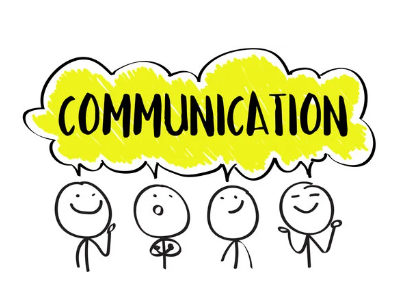Listen to this article
Many studies suggest that body language and non-verbal communications have a greater impact in a discussion than the words you speak.
When meeting a client, a lot depends on how one comes across to the other person. Here are a few tips that will help you develop powerful non-verbal communication skills:
1. Stay connected through eye contact
What doesn’t work?
Avoiding eye contact shows low confidence. You may also come across to be rude, disinterested or dishonest. On the other hand, prolonged eye contact could intimidate the other person. Further, blinking excessively signals anxiety and not blinking comes out to be unnatural. Also, breaking eye contact abruptly is another sign of nervousness.
What could you do?
Maintain eye contact before you start conversing. Make use of the triangle technique to cover the area between the other person’s eyes (imaging them as the base of the triangle) and their mid-forehead (imagine it as the topmost point of the triangle). Gently move your gaze in this area if maintaining direct eye contact makes you uncomfortable.
2. Create an impact through a powerful handshake
What doesn’t work?
A weak grip signals anxiety and uncertainty. Also, getting too close while shaking hands is perceived as an invasion of personal space. Further, a two-handed handshake shows over-friendliness and may not make the other person comfortable. Further, shaking from the shoulder/wrist and using sweaty hands amounts to a bad handshake. It is impolite to shake hands while being seated or to wipe your hands after a handshake.
What could you do?
Casually wipe your hand on your pant, maintain sufficient distance from the other person and start shaking from the elbow. Your thumb should be pointed upwards and the other figures should be together. Always stand, maintain eye contact and give a warm smile. You should keep your other hand visible instead of putting it in your pocket and limit your handshake to two or three pumps. Alternatively, you could also use a namaste or a friendly hand wave.
3. Convey the right message through facial expressions
What doesn’t work?
Frequently touching your face or fidgeting with your hair gets distracting and signals nervousness. A furrowed (marked with lines or wrinkles) forehead depicts anger/frustration and furrowing hints of displeasure. Also, keeping eyes wide open convey aggression and turning the face away shows disinterest. Further smiling excessively looks fake and not smiling at all could turn the conversation unfriendly.
What could you do?
Keep a subtle smile on your face to convey warmth. A smile also conveys you are approachable. You could raise your eyebrows slightly to show enthusiasm and interest in the conversation.
4. Create an impression through controlled gestures
What doesn’t work?
Excessive hand movements cause distractions and also symbolises anxiety. On the other hand, keeping arms crossed reflects unapproachability and putting hands in pockets shows shyness. Whereas, occupying a larger table area by resting your arms or pointing a finger shows dominance. And, if you nod your head continuously it signifies impatience.
What could you do?
Make limited use of gestures. Nod your head to show agreement and gently move it sideways in case of disagreement. While seated, gesticulate by keeping your hands above the desk but below your collar bone. And, in case you are standing do not gesticulate beyond the height of your shoulders.
5. Crack the deal with the correct posture
What doesn’t work?
Slouching (having a drooping posture) while standing or sitting shows you are tired or disinterested to take the conversation ahead. When seated, leaning backwards conveys laziness and leaning too forward shows aggression. Also, moving back and forth in the chair conveys boredom to the other person.
What could you do?
Stand tall with your back straight and shoulders back. Also, keep your head straight and rest your hands on your side. And, if you are seated, stay upright. You could also lean forward slightly to show your interest in the ongoing conversation.









